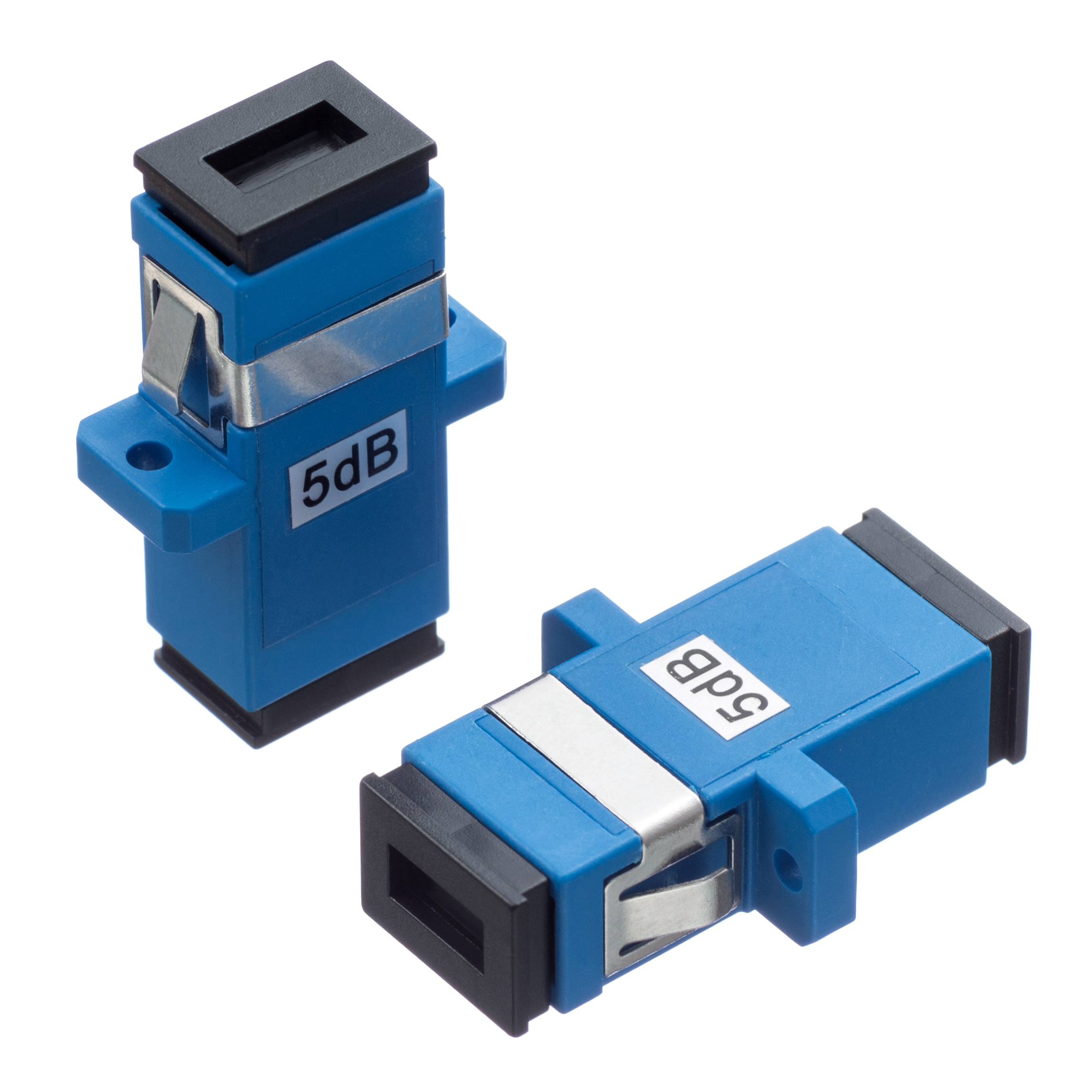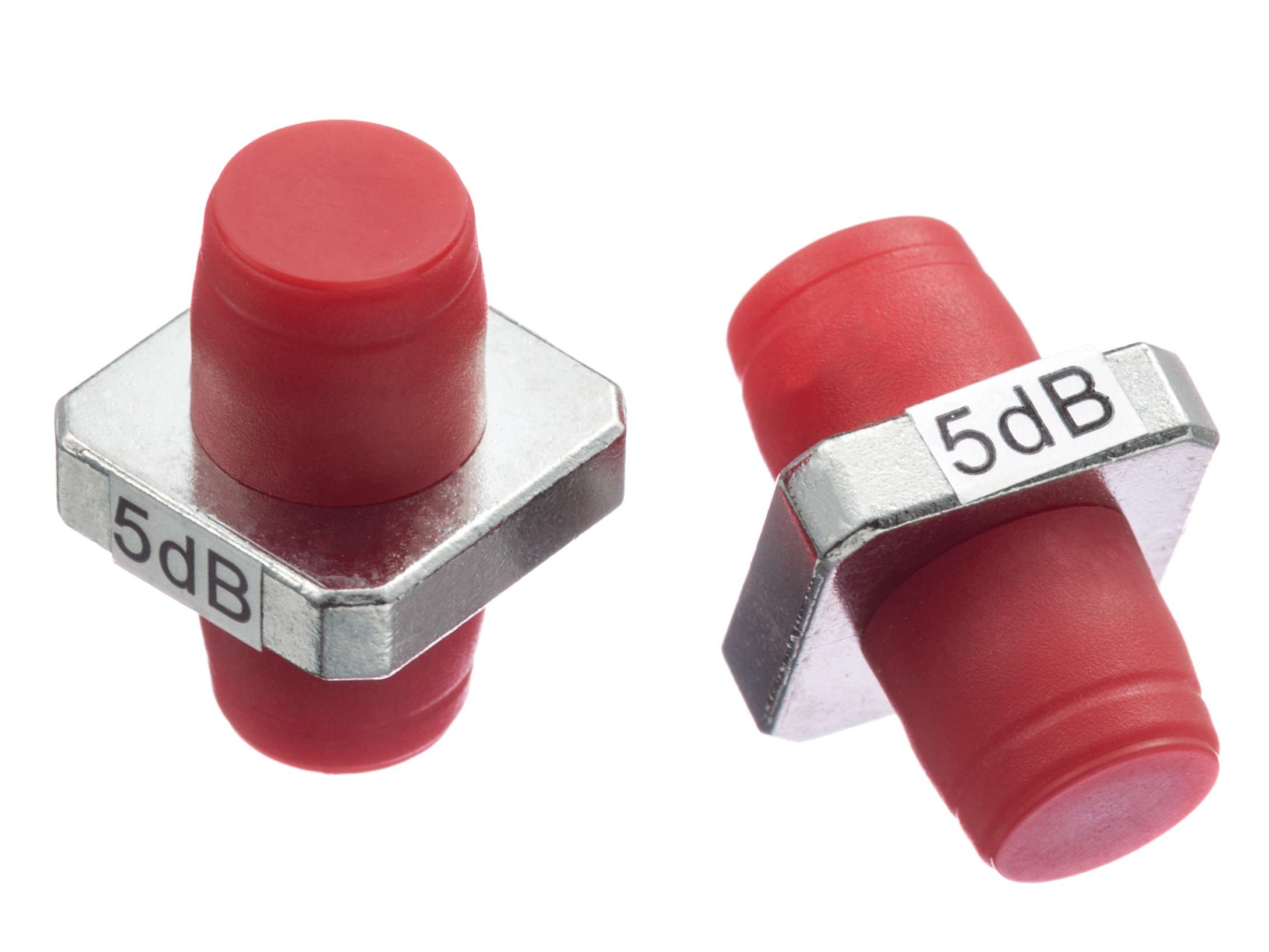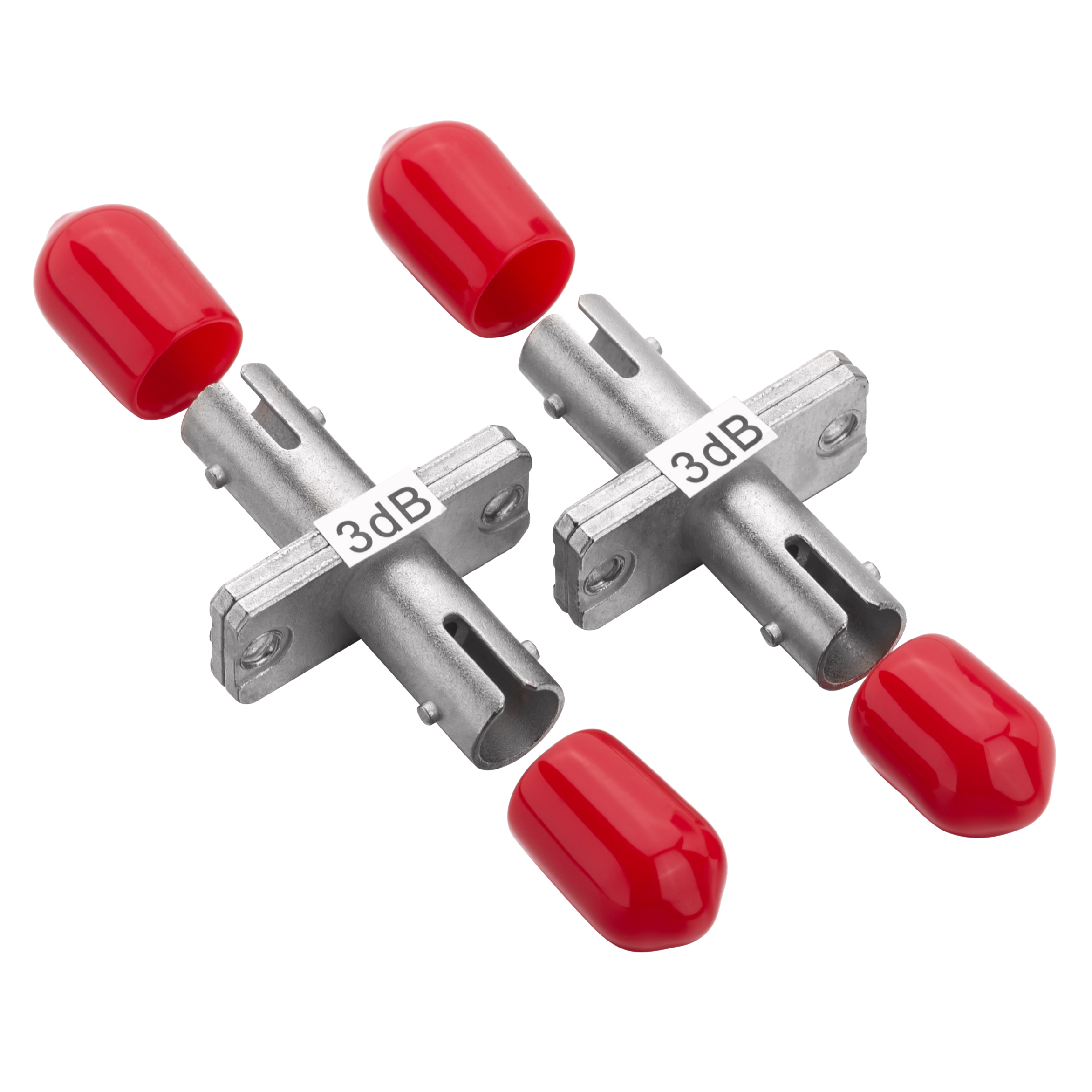Optical Fiber Attenuators: Enhancing Network Performance in Telecommunication Systems

Enhancing Network Performance
Optical fiber attenuators are essential components in telecommunication systems, playing a crucial role in improving network performance and signal attenuation. These devices are specifically designed to reduce the strength of optical signals passing through fiber optic cables. By strategically incorporating optical fiber attenuators into their telecommunication infrastructure, network engineers and professionals can optimize their fiber optic networks.
In today's fast-paced world, where reliable and efficient communication networks are vital, the use of optical fiber attenuators has become increasingly important. These devices help manage signal strength and prevent issues such as signal distortion or data loss. By carefully controlling the signal levels, telecom systems can ensure optimal performance and maintain high-quality communication networks.
The integration of optical attenuators in fiber optic networks offers several benefits. They allow for flexibility in adjusting signal strength according to specific network requirements, ensuring optimal transmission without overloading the system. This adaptability is particularly useful in scenarios where different parts of the network have varying power levels or when connecting equipment with different sensitivities.
Moreover, by reducing signal strength at appropriate points within the network, optical fiber attenuators help prevent excessive power from reaching sensitive components. This prevents damage to expensive equipment and ensures reliable data transmission throughout the network.
In summary, understanding the working principles and benefits of optical fiber attenuators is crucial for enhancing network performance in telecommunication systems. By effectively managing signal attenuation using these devices, telecom professionals can optimize their communication networks for improved reliability and efficiency.
Understanding the Working Principles
What are Optical Fiber Attenuators?
Optical fiber attenuators are devices used in fiber optic networks to reduce the strength of optical signals. They are designed to control signal power levels and manage signal attenuation, ensuring optimal performance in optical communication networks. These attenuators are typically inserted into the fiber optic link and work by absorbing or scattering a portion of the light passing through them.
The purpose of optical fiber attenuators is to prevent excessive signal power from reaching sensitive components within the network. This helps maintain signal integrity and prevents issues such as signal distortion or data loss. By reducing the signal strength, attenuators ensure that the transmitted data remains within acceptable power ranges for reliable optical data transmission.
There are different types of optical attenuators available, each with its own working principle and application. Some common types include fixed attenuators, variable attenuators, and inline attenuators. Fixed attenuators provide a fixed level of attenuation, while variable attenuators allow for adjustable attenuation levels. Inline attenuators are integrated directly into fiber optic cables or connectors.
Mechanisms of Signal Attenuation
Signal attenuation in fiber optic networks can occur due to various factors such as absorption, scattering, and bending losses. Absorption refers to the conversion of light energy into heat as it passes through materials within the fiber optic link. Scattering occurs when light encounters imperfections or irregularities in the fiber structure, causing it to change direction and lose intensity.
Bending losses happen when light rays experience increased curvature within the fiber optic cable due to tight bends or improper installation techniques. These losses result in decreased signal strength along the length of the cable.
Optical fiber attenuators play a crucial role in managing signal strength by compensating for these losses. By strategically placing attenuators at appropriate points within the network, engineers can adjust power levels and ensure optimal transmission without overloading sensitive components.
In summary, understanding the working principles of optical fiber attenuators is essential for effectively managing signal attenuation in fiber optic networks. By utilizing these devices, telecom professionals can maintain reliable communication links and optimize their optical communication networks.

Benefits and Diverse Applications
Advantages of Using Optical Fiber Attenuators
Optical fiber attenuators offer several advantages that contribute to enhanced network performance and reliability. By incorporating these devices into telecommunication systems, network engineers can optimize signal strength and improve data transmission.
One of the key benefits of using optical fiber attenuators is their ability to prevent signal distortion. In fiber optic networks, excessive signal power can lead to nonlinear effects such as dispersion or intermodulation distortion. Attenuators help regulate the power levels, ensuring that signals remain within the linear operating range of the system. This results in improved data transmission quality and reduced errors.
Another advantage is the flexibility provided by optical fiber attenuators in adjusting signal strength according to different network requirements. Telecom systems often have varying power levels across different parts of the network or when connecting equipment with different sensitivities. Attenuators allow for precise control over signal levels, enabling optimal transmission without overwhelming or underpowering components.
Applications in Telecommunication Systems
Optical fiber attenuators find diverse applications in telecommunication systems, catering to both long-haul and short-haul networks. In long-haul networks, which span large distances, attenuators are used to manage signal strength over extended fiber optic cables. This ensures that signals maintain sufficient power throughout their journey without causing issues like dispersion or saturation.
In short-haul networks, such as those found in data centers, telephony systems, and cable television systems, optical fiber attenuators play a crucial role in maintaining signal integrity. These networks often involve multiple connections and equipment with varying sensitivities. Attenuators help balance the power levels between different components, preventing overdriving or underdriving them.
Additionally, optical fiber attenuators are valuable tools for network testing and troubleshooting. They allow engineers to simulate different attenuation scenarios during testing phases and identify potential issues related to signal strength. When troubleshooting network problems, attenuators can be used to isolate specific sections of the network by reducing or increasing signal strength selectively.
In summary, optical fiber attenuators offer significant advantages in enhancing network performance and reliability by preventing signal distortion and providing flexibility in adjusting signal strength according to various requirements. Their applications span across a wide range of telecommunication systems, making them indispensable tools for maintaining optimal communication networks.
Considerations for Selection and Installation
Choosing the Right Optical Fiber Attenuator
When selecting an optical fiber attenuator, several factors should be considered to ensure optimal performance and compatibility with the network. One of the key considerations is matching the attenuation levels with the specific requirements of the network. Different applications may require different levels of signal reduction, so it is important to choose an attenuator that can provide the desired level of attenuation.
Compatibility with different fiber optic connectors and cable types is another crucial factor. Attenuators come in various connector types such as SC, LC, or FC, and it is essential to select one that matches the connectors used in the network infrastructure. Additionally, considering the type of fiber optic cable being used, whether single-mode or multimode, is important to ensure proper compatibility.
Best Practices for Installation and Maintenance
Proper installation techniques are vital to ensure optimal performance of optical fiber attenuators. It is recommended to follow manufacturer guidelines and industry best practices during installation. This includes ensuring clean and properly aligned connectors, avoiding excessive bending or twisting of cables, and securely fastening attenuators in place.
Regular maintenance and inspection are necessary to maintain signal integrity in telecommunication systems. Periodic inspections should be conducted to check for any signs of damage or wear on attenuators or connectors. Cleaning procedures using appropriate tools and materials should be followed regularly to remove dust or debris that can affect signal quality.
In case of any issues or degradation in performance, troubleshooting techniques can help identify potential problems with attenuators or other components within the network. This may involve checking connections, replacing faulty attenuators if necessary, or consulting with experts for further assistance.
By considering these factors for selection and following best practices for installation and maintenance, telecom professionals can ensure optimal performance and long-term reliability of their optical fiber attenuators.

Future Trends and Advancements
Emerging Technologies in Attenuator Design
The field of optical fiber attenuators is constantly evolving, with emerging technologies driving advancements in design and performance. One notable trend is the development of attenuators with higher precision. Manufacturers are continuously improving the accuracy of attenuation levels, allowing for more precise control over signal strength. This enables network engineers to fine-tune their telecommunication systems and optimize performance.
Another significant advancement is the integration of intelligent control systems into attenuators. These systems utilize advanced algorithms and feedback mechanisms to dynamically adjust attenuation levels based on real-time network conditions. This dynamic attenuation capability enhances the adaptability of telecom systems, enabling them to respond to changing demands and optimize signal transmission.
These emerging technologies in attenuator design have the potential to greatly impact network performance. With higher precision and dynamic control, telecom professionals can achieve better signal management, reduce errors, and improve overall data transmission quality. As these advancements continue to evolve, we can expect even greater efficiency and reliability in telecommunication networks.
Cost-Effectiveness and ROI of Optical Fiber Attenuators
Analyzing the economic benefits of using optical fiber attenuators reveals their cost-effectiveness and return on investment (ROI) for network optimization. While there may be an initial investment in acquiring attenuators, the long-term advantages outweigh the costs.
By incorporating attenuators into telecommunication systems, network engineers can prevent signal distortion, reduce errors, and improve data transmission quality. This leads to increased productivity, reduced downtime, and improved customer satisfaction. The cost savings resulting from enhanced network reliability can be substantial over time.
Calculating ROI involves considering factors such as reduced maintenance costs due to improved signal integrity, minimized equipment damage from excessive power levels, and optimized resource utilization within the network infrastructure. Attenuators contribute to long-term cost savings by extending the lifespan of expensive equipment through proper power management.
Moreover, improved network reliability translates into enhanced business opportunities for telecom service providers. Reliable communication networks attract more customers and enable expansion into new markets or services.
In summary, emerging technologies in attenuator design offer exciting possibilities for enhancing network performance in telecommunication systems. The cost-effectiveness and ROI of optical fiber attenuators make them a valuable investment for optimizing communication networks while ensuring long-term cost savings and improved reliability.
Future Trends and Conclusion
In conclusion, optical fiber attenuators are vital components for enhancing network performance in telecommunication systems. Understanding their working principles and the benefits they offer is crucial for optimizing communication networks. As technology continues to advance, we can expect promising advancements in attenuator design, leading to higher precision and dynamic control over signal strength. These advancements will further improve network reliability and data transmission quality.
As telecom professionals strive to optimize communication networks, incorporating optical fiber attenuators into their infrastructure is a wise investment. The cost-effectiveness and return on investment of these devices make them valuable tools for achieving long-term cost savings and improved network reliability.
By staying informed about emerging technologies in attenuator design and considering the future trends in this field, telecom professionals can stay ahead of the curve and ensure their networks are equipped with the latest advancements in optical fiber attenuators.
See Also
Choosing the Right Optical Fiber Attenuator: Factors to Consider
Understanding Different Types of Fiber Optic Adapters: A Comprehensive Guide
Building Reliable Network Infrastructure with Fiber Patch Cords
Exploring the Applications of LC SC Duplex Fiber Optic Adapters
About US
Follow Us
AnetFiber company's main products are indoor and outdoor optical fiber cables, outdoor waterproof pre-connected fiber-to-the-home products, PLC optical fiber splitters, optical fiber jumpers and pigtails, MTP®/MPO high-density big data product solutions, optical fiber field quick connectors and research and development molding, injection molding and production of optical fiber distribution boxes, optical fiber chassis cabinets, the market has expanded to the world, Europe, America, Asia, the Middle East and Latin America.
Address
Shenzhen City, Baoan District, Yanluo Street, Tangxiayong Community, Yangyong Industrial Road, Tonggangda New Energy Vehicle Park 406
Contacts
+86 199 2655 3586

